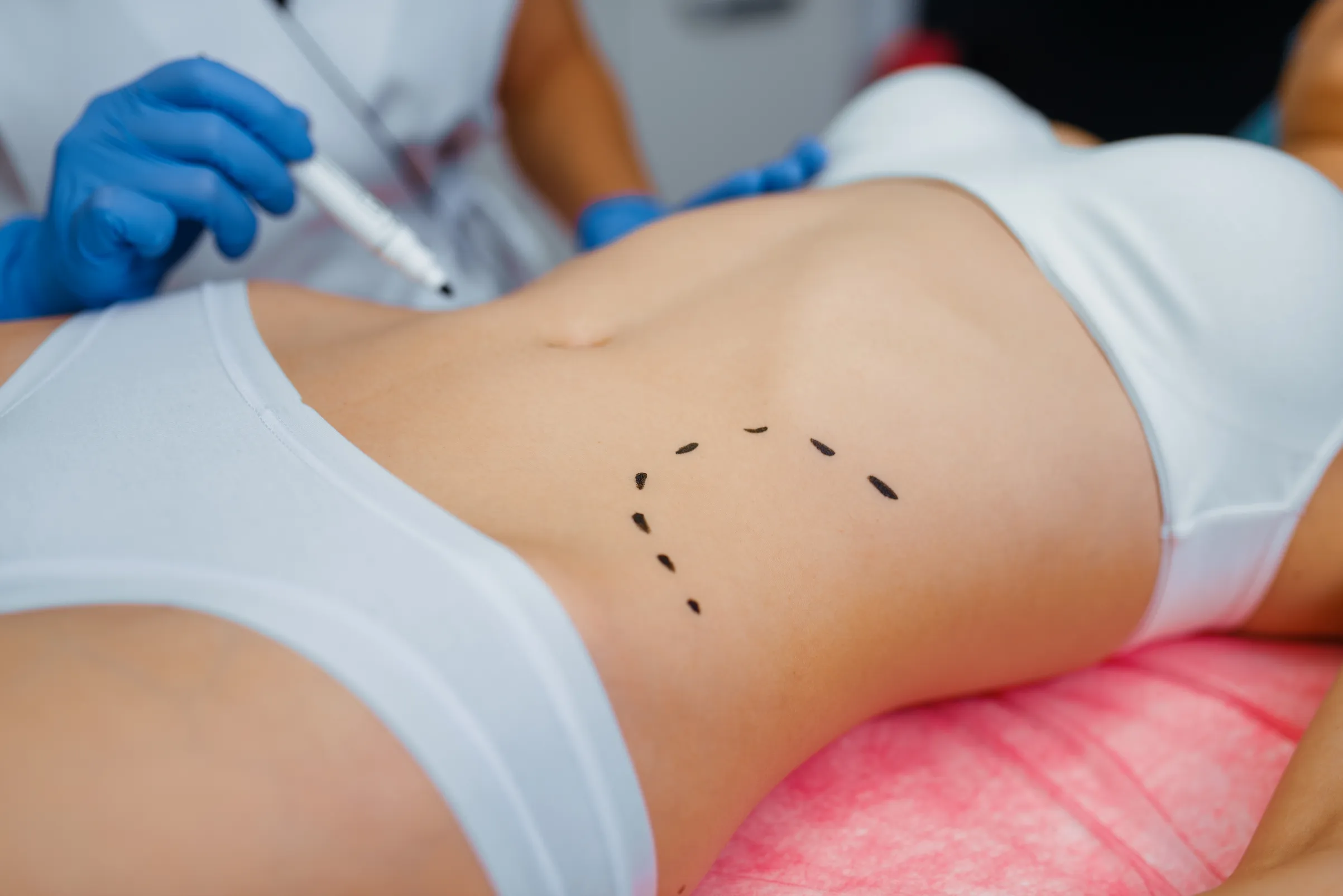People with positive self-perception and body image tend to be less likely to undergo cosmetic surgery; when they do opt for cosmetic procedures, however, it’s crucial that they fully comprehend any associated risks and get comprehensive information about procedures.
Before undertaking body contouring surgery, it’s best to be at an ideal weight. In addition, certain medications that increase bleeding should also be discontinued prior to surgery.
Tummy Tuck
Tummy tuck surgery, commonly referred to as abdominoplasty, removes excess skin and fat on the abdomen while tightening abdominal muscle to produce a flatter and firmer stomach. Abdominoplasty may be performed alone or combined with liposuction for maximum effectiveness.
Tummy tucks are often associated with women after pregnancy, but men can also benefit from this procedure. Loose, excess tissue in your midsection can make your waist appear wider than it should, making diet and exercise ineffective in combatting it. A tummy tuck provides an effective solution, correcting loose abdominal muscles as well as weak fascia to bring back that slim waistline you desire.
Dr. sibel will use general anesthesia during your tummy tuck procedure, making an incision near the belly button and repositioning it in its natural position. Subsequently, skin is lifted back off to reveal abdominal muscles which will then be tightened using sutures and plication. Finally, any remaining skin will be trimmed and sutured before temporary drainage tubes might be left in place for removal of excess fluid in days post surgery.
Undergoing tummy tuck surgery often leads to pain, swelling and bruising; healing times for incisions may take several weeks; therefore it’s essential that a supportive garment be worn and that you comply with doctor instructions to ensure full recovery.
Abdominoplasty
Abdominoplasty, more commonly referred to as “tummy tuck”, is a surgical procedure which removes excess abdominal skin and fat and tightens lax muscles of the abdomen in order to achieve slimmer and firmer abdominal skin and muscles. It’s most frequently done on patients who have lost significant amounts of weight as well as after pregnancy that caused loose skin or weakened abdominal muscles; diastasis recti repair surgery can also help resolve lower back pain, poor posture and bloating issues caused by muscle separation of rectus abdominal muscles (diastasis recti).
Undergoing a standard tummy tuck procedure involves making an incision above and around the belly button (umbilicus). Next, loose skin from fascia of rectus muscles are released and tied off using long lasting absorbable sutures such as polydioxanone to reinforce abdominal wall structure. Finally, multiple layers of sutures are used to redrape this flap onto new abdominal skin before applying firm elastic dressing.
When treating patients with minimal abdominal skin excess but an infra-umbilical laxity of their upper abdominal wall, a “mini” abdominoplasty may be performed using smaller incisions and more targeted techniques. For optimal body shaping results, circumferential abdominoplasty can also include removal of fat tissue and excess skin from hips and thigh area for additional body shaping benefits.
360o Body Lift
The 360o Body Lift (commonly referred to as Belt Lipectomy or Girdle Lift Surgery) tightens skin in the middle and lower abdomen, outer thighs, hip region, coccyx, and coccyx to reveal natural, toned muscles of the body. It does not work as weight loss treatment but instead serves as body contouring procedure that highlights results of hard work in leading a healthier lifestyle.
A total body lift is one of the most extensive forms of body surgery, targeting loose sagging skin from both lower body and back areas for a transformed silhouette. Ideal candidates include men or women who have lost significant amounts of weight and now struggle to achieve proportionate figures due to excess skin in specific spots on their bodies.
Liposuction involves making several incisions around the area to be treated and accessing stubborn fat deposits with liposuction. Once these areas have been contoured, excess skin is removed before closing up incisions. Lower back and abdominal regions tend to be treated first before hips/buttocks/thighs areas depending on how much excess skin needs addressing; surgery may need multiple sessions, depending on its extent; patients are recommended to find someone they trust who can assist them during early recovery stages with errands/chores etc.
Breast Augmentation
Breast augmentation, also known as augmentation mammoplasty, is a cosmetic surgical process designed to increase breast size by implanting implants behind your breast tissue or chest muscle. These sacs filled with either sterile salt water (saline) or silicone gel come in many different sizes so as to fit with your desired breast shape and appearance.
Breast augmentation typically requires two hours and should be done as an outpatient procedure, usually performed under general or local anesthesia. Your surgeon will make incisions in either your underarm (known as the axilla) or inframammary area (inner crease beneath breasts), then insert an implant into a pocket above or below chest muscle that they created during this process.
After your surgery is completed, your physician will use gauze and drainage tubes to help manage discomfort. Over-the-counter pain relievers such as acetaminophen may help manage symptoms; your physician will let you know when it’s safe to return to work and regular activities.
Monitor your breasts regularly for pain, lumps, or texture changes that could signal ruptured implants. Contact the clinic where you received them immediately if you notice red skin patches, swelling or any unusual symptoms such as red skin on red skin; or report issues through the Yellow Card scheme of government.
Disclaimer: The content on this blog is intended for general informational purposes only. It is not a substitute for professional medical advice, diagnosis, or treatment. Always consult qualified healthcare providers for personalized advice. Information regarding plastic surgery, dental treatment, hair transplant, and other medical procedures is educational and not a guarantee of results. We do not assume liability for actions taken based on blog content. Medical knowledge evolves; verify information and consult professionals. External links do not imply endorsement. By using this blog, you agree to these terms.





